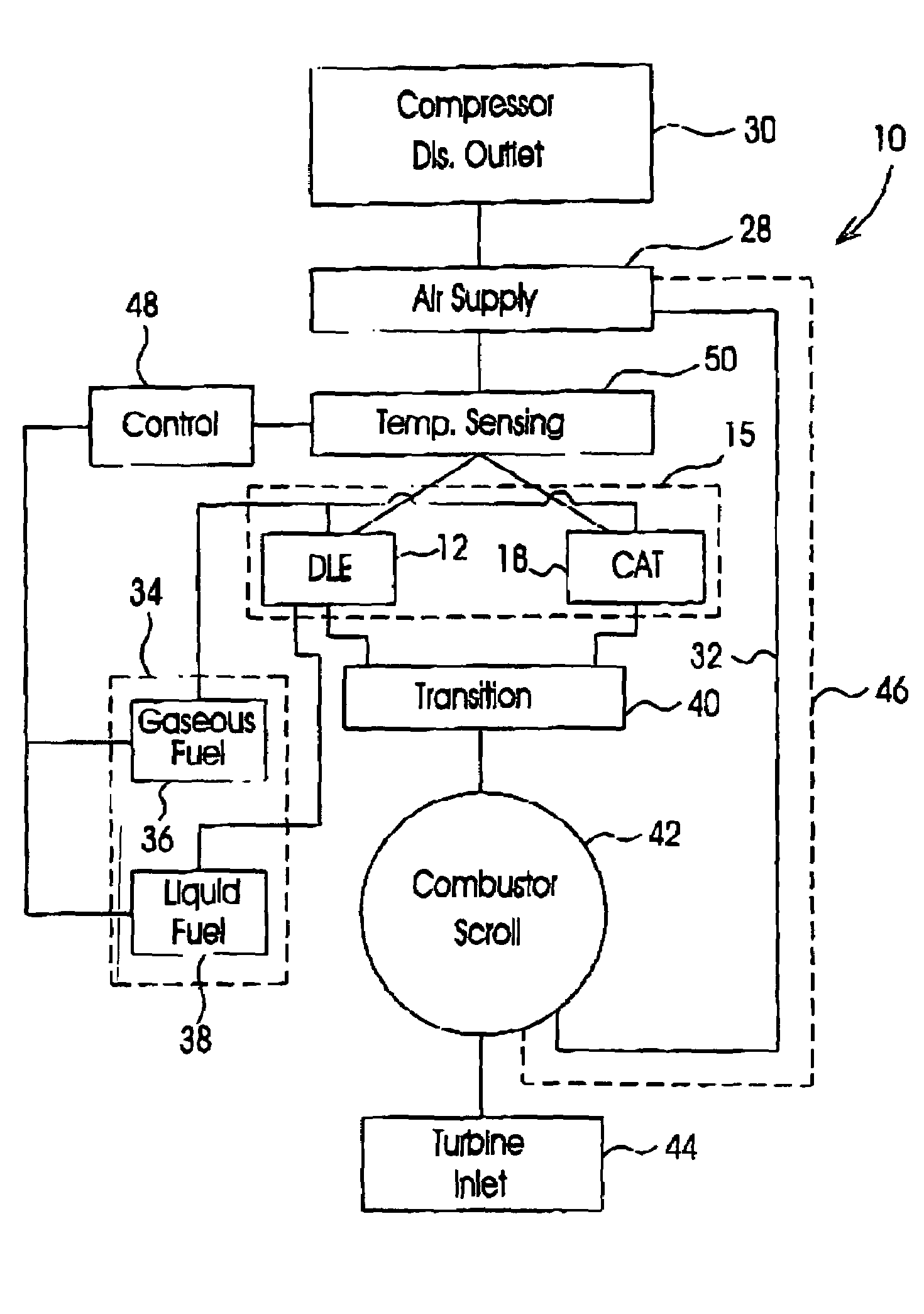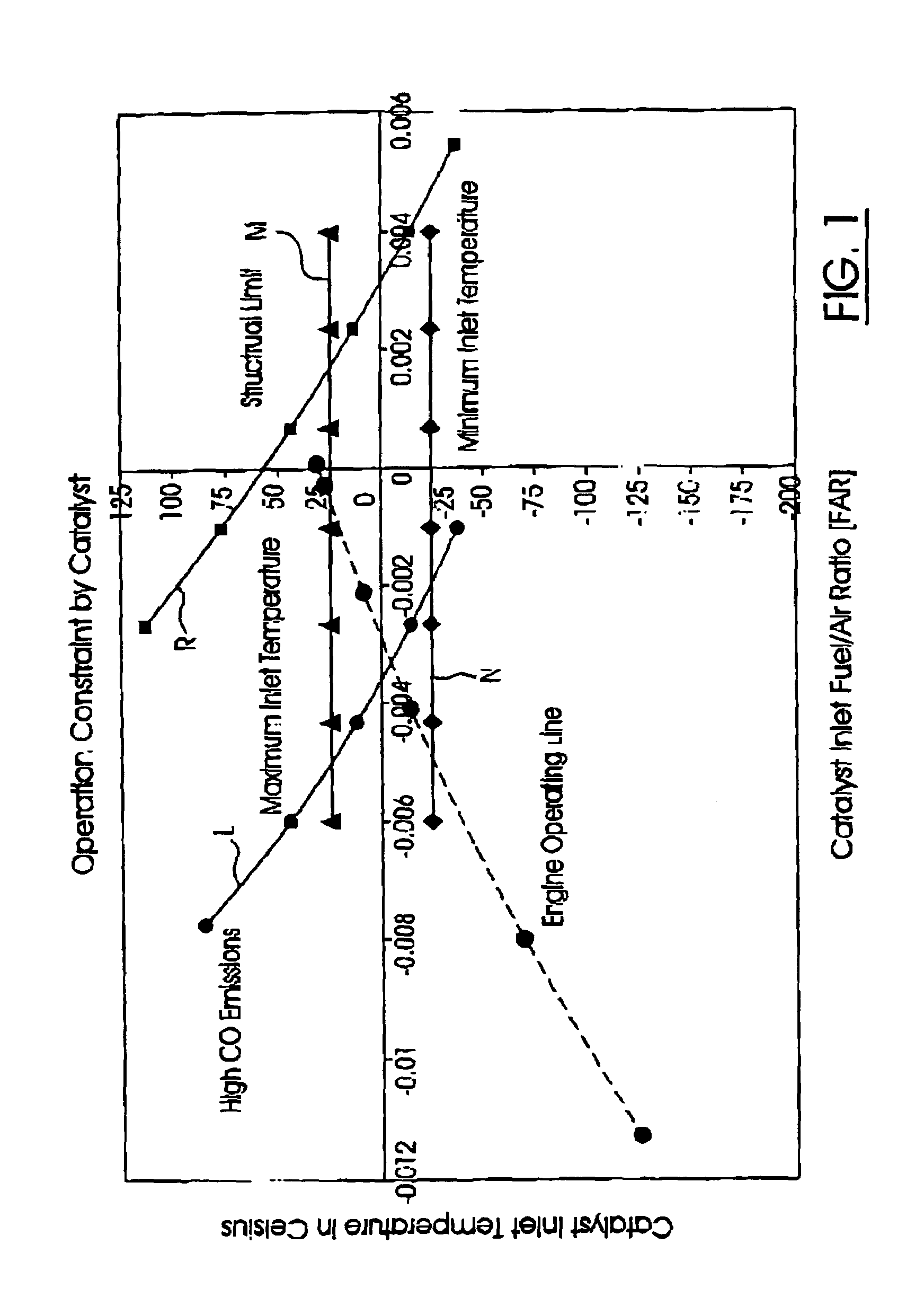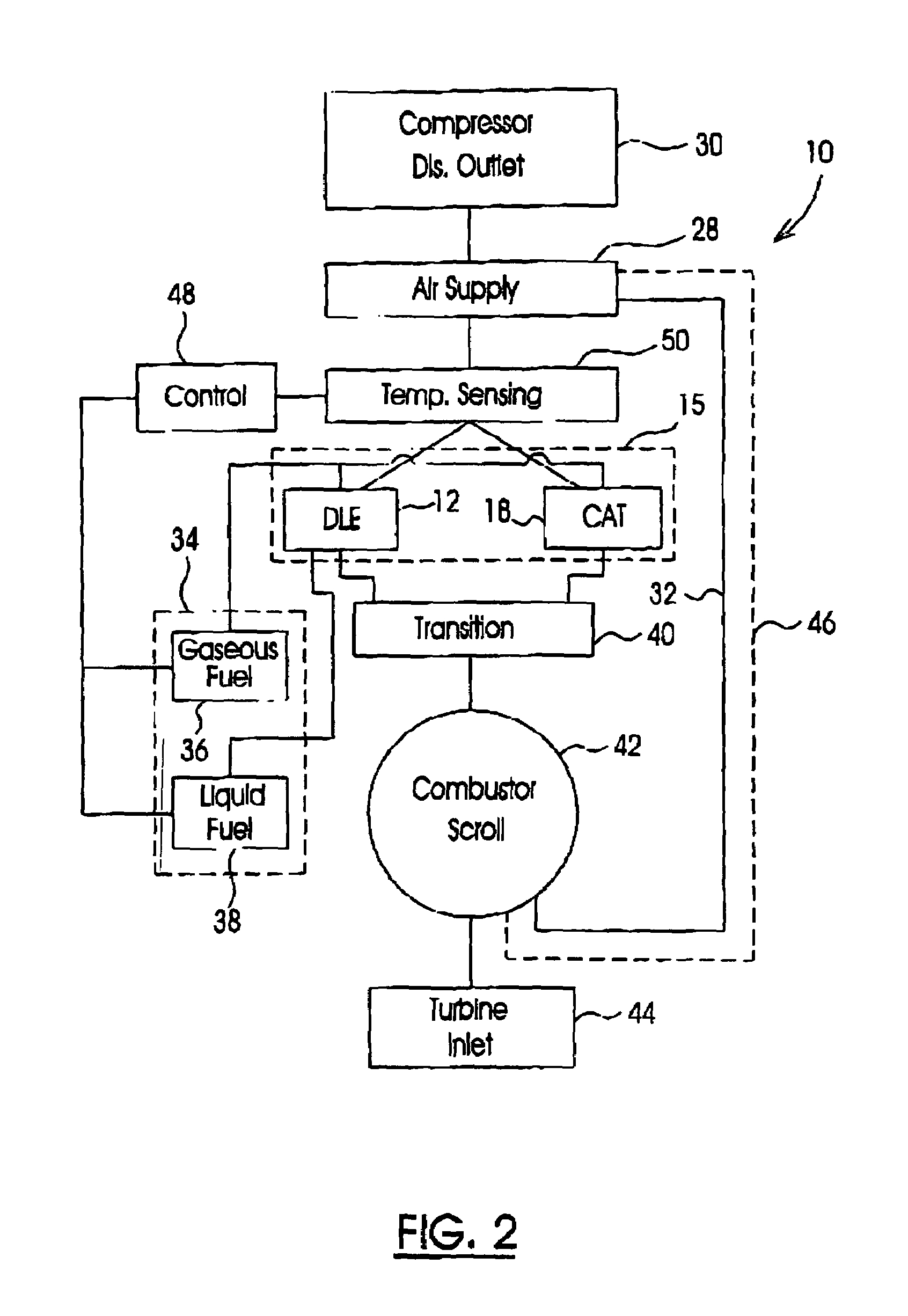Ultra low Nox emissions combustion system for gas turbine engines
a combustion system and gas turbine technology, applied in the combustion process, engine ignition, lighting and heating apparatus, etc., can solve the problems of severe constraints, combustor operation close to blowout limit, and rapid decrease of flame stability
- Summary
- Abstract
- Description
- Claims
- Application Information
AI Technical Summary
Benefits of technology
Problems solved by technology
Method used
Image
Examples
Embodiment Construction
[0018]Referring to the drawings, particularly to FIGS. 2 and 3, the invention describes a combustion system, generally indicated at numeral 10, that permits the operation of a gas turbine engine at highest engine efficiency while minimizing the emissions of nitrogen oxide (NOx) and carbon monoxide (CO) from the engine. The combustion system 10 includes a Dry-low-emissions (DLE) combustion sub-system 12 which is generally formed with a fuel / air mixer 14 to provide a lean-premixed fuel / air mixture to the burner 16 to generate combustion products, generally hot gas. The DLE combustion sub-system 12 operates on liquid and gaseous hydrocarbon fuel. The DLE combustion sub-system 12 is conventional, well known in the art and will not be further described. A separate Catalyst (CAT) combustion sub-system 10 is included in the combustion system 10 which operates separately from the DLE combustion sub-system 12.
[0019]The CAT combustion sub-system 18 includes a fuel / air mixer 20 to provide a le...
PUM
 Login to View More
Login to View More Abstract
Description
Claims
Application Information
 Login to View More
Login to View More - R&D
- Intellectual Property
- Life Sciences
- Materials
- Tech Scout
- Unparalleled Data Quality
- Higher Quality Content
- 60% Fewer Hallucinations
Browse by: Latest US Patents, China's latest patents, Technical Efficacy Thesaurus, Application Domain, Technology Topic, Popular Technical Reports.
© 2025 PatSnap. All rights reserved.Legal|Privacy policy|Modern Slavery Act Transparency Statement|Sitemap|About US| Contact US: help@patsnap.com



